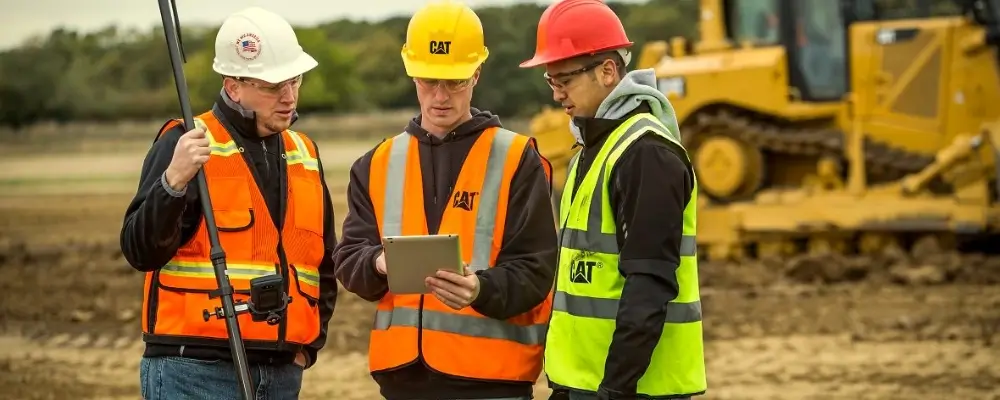In today’s fast-paced work environments, prioritizing safety awareness is paramount to ensuring the well-being of employees and the smooth operation of businesses. Understanding the importance of identifying and mitigating workplace hazards, promoting safety awareness is not just a legal obligation but a moral imperative.
In this blog, we delve into the concept of safety awareness and explore effective strategies for cultivating a culture of safety in the workplace, from comprehensive training programs to proactive communication and the use of visual reminders.
What’s Safety Awareness?
Safety awareness refers to the conscious and proactive recognition of potential hazards and risks in the workplace or any environment, along with the adoption of behaviors and practices aimed at preventing accidents, injuries, and damage to property. It involves being mindful of safety protocols, procedures, and best practices, as well as promoting a culture where safety is prioritized by all individuals involved. Safety awareness encompasses both the recognition of existing hazards and the implementation of measures to mitigate or eliminate them, thereby fostering a safe and healthy environment for all.

Why Safety Awareness Is So Important?
Safety awareness is crucial for several reasons:
- Prevention of Accidents and Injuries: Being aware of potential hazards allows individuals to take proactive measures to prevent accidents and injuries before they occur. This can significantly reduce the risk of harm to oneself and others in the workplace or any environment.
- Promotion of Health and Wellbeing: Prioritizing safety awareness contributes to the overall health and wellbeing of individuals. By avoiding accidents and injuries, employees can maintain their physical and mental health, leading to higher morale and job satisfaction.
- Protection of Property and Resources: Safety awareness not only safeguards individuals but also helps protect property and resources from damage or destruction. By identifying and addressing hazards promptly, organizations can minimize losses and maintain operational continuity.
- Legal Compliance: Many jurisdictions have regulations and standards in place to ensure workplace safety. Safety awareness ensures compliance with these legal requirements, reducing the risk of fines, penalties, and legal liabilities for organizations.
- Enhancement of Productivity: A safe work environment fosters greater productivity and efficiency. When employees feel safe and secure, they can focus more effectively on their tasks, leading to improved performance and output.
- Cost Savings: Preventing accidents and injuries through safety awareness initiatives can result in significant cost savings for organizations. Expenses related to medical treatment, worker compensation claims, property damage, and productivity losses can be minimized or avoided altogether.
- Positive Organizational Culture: Cultivating a culture of safety awareness demonstrates an organization’s commitment to the wellbeing of its employees. This fosters trust, loyalty, and cooperation among team members, leading to a positive and supportive work environment.
Overall, safety awareness is essential for protecting individuals, preserving resources, maintaining legal compliance, enhancing productivity, and fostering a positive organizational culture. It is a fundamental aspect of responsible and effective management in any setting.

Ways to Promote Safety Awareness in The Workplace
Promoting safety awareness in the workplace requires a multifaceted approach that engages employees at all levels and incorporates various strategies. Here are different ways to promote safety awareness:
1. Training and Education
Comprehensive safety training programs are essential for equipping employees with the knowledge and skills necessary to identify workplace hazards, understand safety protocols, and respond effectively in emergency situations. These programs should cover a wide range of topics, including but not limited to, proper use of equipment, handling hazardous materials, emergency evacuation procedures, and first aid techniques.
Training sessions should be tailored to the specific needs and roles of employees, with regular refresher courses provided to reinforce learning and update employees on any changes to safety procedures.
2. Regular Safety Meetings
Regular safety meetings or toolbox talks serve as opportunities to engage employees in discussions about specific safety topics relevant to their work environment. These meetings provide a platform for addressing concerns, sharing best practices, and reinforcing the importance of safety in daily operations.
Topics covered in safety meetings may include recent incidents or near misses, updates on safety policies or procedures, new equipment or technology introductions, and tips for preventing common workplace hazards.
3. Safety Committees
Safety committees play a vital role in promoting safety awareness by bringing together representatives from different departments or teams to identify hazards, develop safety policies, and implement safety initiatives collaboratively.
Committee members collaborate to assess workplace hazards, conduct risk assessments, and develop strategies to mitigate risks effectively. By involving employees in the decision-making process, safety committees foster a sense of ownership and commitment to maintaining a safe work environment.
4. Visual Reminders
Visual aids such as posters, signs, banners, and digital displays are effective tools for communicating safety messages and raising awareness of potential hazards in the workplace. These visual reminders can be strategically placed in high-traffic areas, near equipment or machinery, and in areas where specific safety protocols apply.
Visual reminders should convey clear and concise messages, using images and text to reinforce key safety procedures and promote a culture of safety throughout the organization.
5. Safety Walks and Inspections
Regular safety walks and inspections are essential for assessing workplace conditions, identifying hazards, and ensuring compliance with safety regulations. These activities involve observing work practices, inspecting equipment and machinery, and evaluating the effectiveness of safety controls and procedures.
By involving employees in safety walks and inspections, organizations encourage active participation in safety initiatives and empower employees to take ownership of their safety responsibilities.
6. Reward and Recognition Programs
Implementing reward and recognition programs incentivizes employees to prioritize safety and actively contribute to improving safety culture. Recognition may be given to employees who demonstrate exemplary safety behaviors, report hazards, or participate in safety initiatives.
Rewards can take various forms, such as monetary bonuses, gift cards, or public acknowledgment, and should be aligned with the organization’s safety goals and values.

7. Near-Miss Reporting
Encouraging employees to report near-miss incidents, near accidents, or unsafe conditions promptly is critical for identifying underlying safety issues and implementing preventive measures. Near-miss reporting helps organizations proactively address potential hazards before they result in accidents or injuries, promoting a culture of continuous improvement and learning from past experiences.
8. Promote Open Communication
Creating an environment where employees feel comfortable raising safety concerns, providing feedback, or suggesting improvements is essential for fostering a culture of safety transparency and trust.
Open communication channels between management and employees encourage dialogue about safety issues, allowing organizations to address concerns promptly and collaboratively develop solutions to improve safety performance.
9. Leading by Example
Leadership plays a crucial role in promoting safety awareness by demonstrating a commitment to safety through their actions and behaviors. Leaders should adhere to safety protocols, actively participate in safety initiatives, and emphasize the importance of safety in all aspects of the organization. By leading by example, leaders inspire employees to prioritize safety and contribute to building a strong safety culture.
10. Continuous Improvement
Regularly reviewing and evaluating safety policies, procedures, and practices is essential for identifying areas for improvement and enhancing safety effectiveness continually. Organizations should solicit feedback from employees, analyze safety performance data, and implement necessary changes to address emerging safety concerns and prevent future incidents.
By embracing a culture of continuous improvement, organizations demonstrate a commitment to maintaining a safe and healthy work environment for all employees.
Conclusion
In conclusion, fostering safety awareness in the workplace is not merely a box to check off but a continuous commitment to the health and welfare of employees. By implementing comprehensive training programs, regular safety meetings, and visual reminders, organizations can ingrain safety practices into the fabric of their culture. Encouraging open communication, rewarding positive safety behaviors, and actively involving employees in safety initiatives further solidify the foundation of a safety-conscious environment.
Ultimately, prioritizing safety awareness not only minimizes risks and prevents accidents but also cultivates a sense of responsibility and empowerment among employees, leading to a safer and more productive workplace for all.

